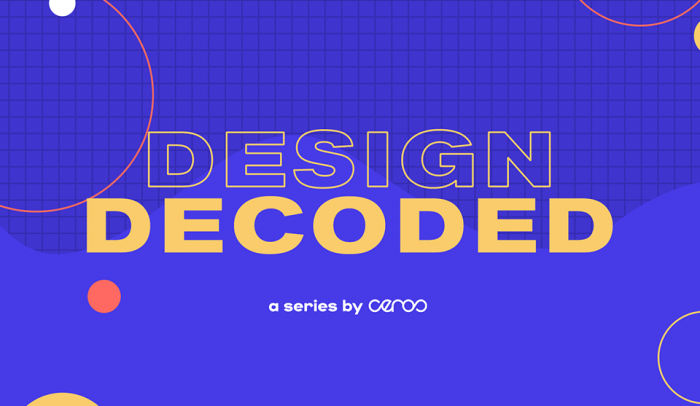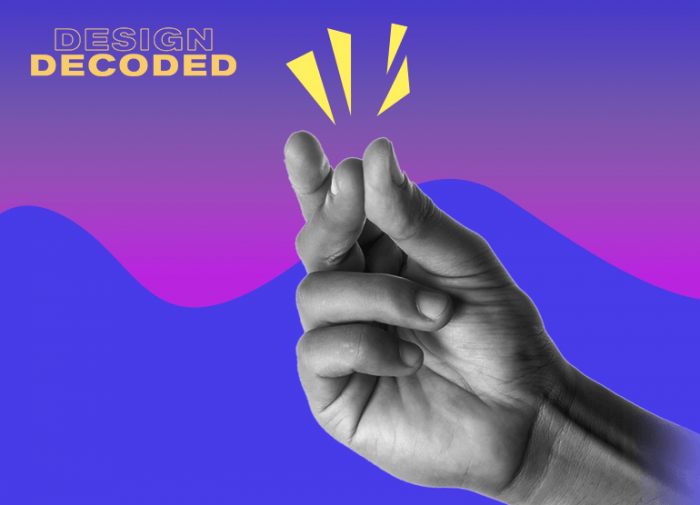Welcome to Design Decoded, our original video series. In each video, we’ll trace the history of some popular UX design element and attempt to explain its ubiquity. First up, we took a look at the caret, and then, the hamburger menu. This time, we’re examining the golden ratio.
The golden ratio, a.k.a. the divine proportion, dates back to Euclid’s studies some 2300 years ago. It describes when two quantities are in particular proportion to each other. Picture it like this (and see 0:35 in the video for visual reference): the red area’s relation to the blue area is exactly the same as the blue area’s relationship to the combined area of blue and red. You math nerds might think of it like this: 1.6180, and so on, and so forth.
The ratio is also related to (and often confused with) the Fibonacci number sequence, which is when each number is the sum of the two previous numbers. Both of these patterns show up a lot in nature, in famous artworks, in architecture, and in branding. Pepsi used it to give its classic logo a new shape, and so did Warner Brothers.
Our cultural obsession with the golden ratio goes all the way back to the 19th century. That’s when people started to believe that everything was organized by the golden ratio. Not just paintings and plants, but us—animals and humans. Everything was in harmony with the natural world. And even Dalí thought so.
And even now, there’s a cult of people who believe that the golden ratio is behind every good design—that it’s what makes the Mona Lisa, the Apple logo, and the Pyramids of Giza so legendary. But they’re wrong. There’s no evidence that the golden ratio was used to create any of these things—so I guess there’s nothing divine about it. Maybe it’s just good design.
In the digital world, however, it is used pretty often. It’s a simple way to keep the bodies and side bars of web pages in balance with one another, drawing the eye to the most important part of the page while making sure every element has enough space around it.
No doubt the golden ratio is a handy design tool—just don’t go looking for it in places where it doesn’t exist.



